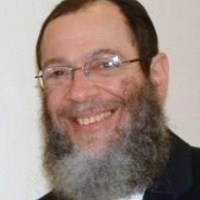
Abaye and Rava were seated before Rabba. Rabba said to them: To whom does one recite brochos? They said to him: To Rachmana [the Merciful, i.e. Hashem]. Rabba asked them: And where does Rachmana reside? Rava pointed to the ceiling. Abaye went outside and pointed toward the heavens. Rabba said to them: You will both become Rabbis. It is as people say: A cucumber can be recognized from its blossom. (Brachos 48a)
Abaye and Rava were children at the time of this story. From the answers they gave, it was apparent that they were destined to become great Torah scholars and teachers.
From the haggadah, we see that a child’s questions can also reveal their propensities.
Only three of the haggadah’s four sons asked questions. What can we learn about them from the questions they asked?
According to Rokeach, the first son is called chacham because he knows about the nisim, the miracles that Hashem performed for us to take us out of Mitzrayim but he is puzzled by the chukim, the unusual things that we do at the seder. (Haggadah shel Pesach, Mesivta, page 490)
Another commentator writes that this son is not an actual chacham for if he were he wouldn’t ask this question. Rather, he is chacham b’koach, potential chacham with a clear but not yet learned mind. (ibid.)
The Chofetz Chaim is quoted as saying that the first son is called chacham rather than tzadik because a tzadik serves Hashem b’tmimus, without asking questions. (Haseder Ha’aruch, volume 3, page 144)
Abrabanel notes that there are three ways to ask a question: To show how smart you are, to challenge, or to seek information. He posits that the question asked by the chacham was to show how smart he is, the question posed by the rasha was to challenge, and the question posed by the tam was to seek information. (cited ibid. page 489)
Haseder Ha’aruch elaborates on this theme: The four sons represent four generations. The so-called chacham is a skeptic, a maskil, who needs answers, reasons for doing the mitzvos, unlike his father, the tam, who performs the mitzvos unquestioningly. This chacham’s son is the rasha who refuses to do mitzvos he doesn’t understand. His son, the tam, has never seen his father fulfill any mitzvos. When the rasha brings him to his [the tam’s] Zaidy’s home on Pesach night, he’s astonished and asks, mah zos, what is happening here? The tam’s son, whose father and Zaidy did no mitzvos, doesn’t even realize there’s anything to ask. He doesn’t know what he’s missing. (Haseder Ha’aruch, volume 3, page 143, based on the Malbim, Shemos 13:12)
It appears as though the tam, the son who sits quietly and wants to learn from his father is seen, by some, as behaving more appropriately than the chacham who is more involved in telling what he knows than learning what he doesn’t.1
V’nahafoch hu, on Pesach? It says v’higadta l’bincha, not v’higadta l’aveecha!
It doesn’t have to be one or the other. Children enjoy telling over what they’ve learned and parents enjoy the nachas when they hear their children’s Torah. It is the role of parents to make sure their children enjoy hearing their parents’ Torah.
Both timing and message matter.
The timing of marbeh l’saper should be after the seudah so that the children will be awake for the most of the seder. (Haggadah shel Pesach, Mesivta, page 466)
What is the main message of the haggadah? To instill in the hearts of his children the might and the wonders of Hashem. Therefore it is proper to tell the haggadah in their native language to make known to them the great miracles, acts of might, and wonders Hashem did for us. It is not sufficient to tell these miracles in the general terms of the haggadah. Rather, he must elaborate upon each miracle in detail as described in the Gemara, Midrashim, and other seforim.
That is the verbal message. The non-verbal message brings the words to life, touches the hearts and neshamos of the children. It is what the Rambam implied with the term l’haros es atzmo, to show others what it feels like to experience the miracles you are describing, to display the joy you are feeling.
The ikar, the main aspect of the sipur, is the chedva and the simcha in the heart… You see crystal clearly that this sipur must be said with chedva and simcha.
It is also proper to tell over to his family the ten miracles that were done for our ancestors at the Sea. These are listed in the commentary of the Bartenura in the fifth chapter of Avos in the Mishna “ten miracles were performed for our ancestors in Mitzrayim and ten at the Sea.” (Yesod v’Shoresh ha’Avodah, shaar 9, chapter 6, pages 466-467 and 470 in Rosenfeld Publishing edition, Yerushalayim, 5747)
I would suggest that educators prepare children for both the role of chacham and of tam in the finest sense of each of those. Prepare them to say over Torah and to learn Torah at the Seder.
Perhaps an assignment over Yom Tov might be: write over, in your own words, three things about the nisim of Yetzias Mitzrayim that you learned from your father or another adult at the seder.
Prepare them for all of what we aspire to: lilmod ul’lameid, lishmor v’laasos, ul’kayeim to be a source of nachas to Klal Yisrael and Hashem.
1The story entitled The Sophisticate and the Simpleton is a fascinating parable of the value of being a tam in contrast to being this type of chacham. In the Yiddish version of the story, the Sophisticate is called the Chacham and the Simpleton is called the Tam. (Rabbi Nachman’s Stories, translated by Rabbi Aryeh Kaplan, Breslov Research Institute, 1983, page 160)
Rabbi Yitzchak Shmuel Ackerman is a Licensed Mental Health Counselor with specialties in marriage, dating, and parenting.
He is the author of Confident Parents, Competent Children, in Four Seconds at a Time Available at bookstores and on Amazon.
He can be reached at 718-344-6575.

 Previous
Previous

